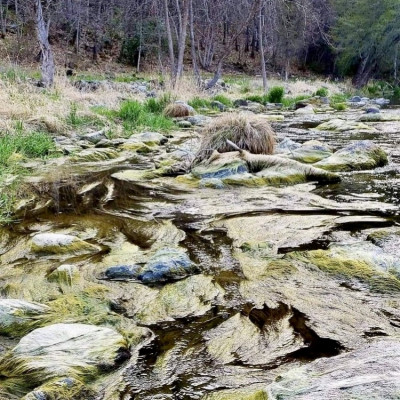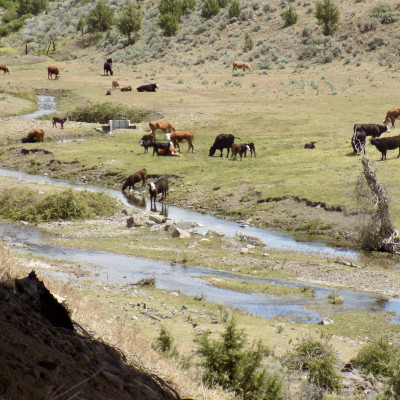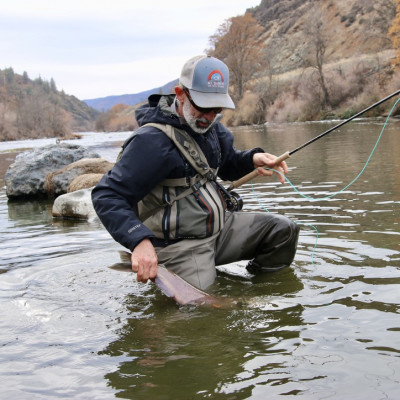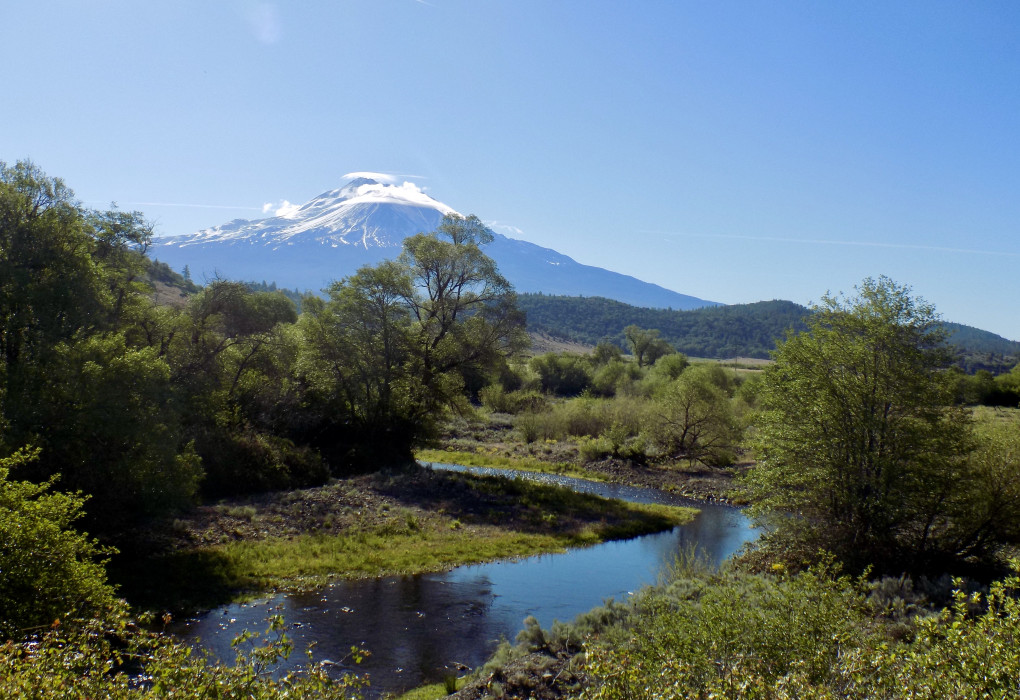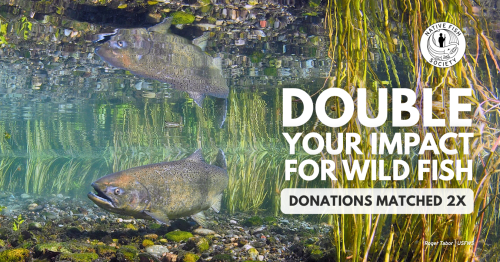Its Time to Share the Shasta River
My passion for Shasta River restoration began when I felt the tug and saw that first Klamath River Steelhead leap from a pool downstream of the Shasta River confluence. That experience led to 2 decades of wading through the Shasta where I experienced her many wonders. Schools of salmon entering in the fall heading for Salmon Heaven (yes, it’s actually a place). An otter family patrolling the bank or sitting on rocks munching a salmon carcass, peering at me through piercing eyes. Lion tracks and a raw patch of deer skin in the sand that raised the hair on my neck. A startled Golden Eagle rising from the bank whose evening meal I unknowingly interrupted.
In recent years more and more I noticed something awry as my Shasta River adventures expanded from Fall into Spring and Summer. The water didn’t look or smell right, a dark tint and the odor of sewage hinted of something amiss upstream. The water felt too warm, almost hot. Where I expected to see darting fish, none showed themselves. In late summer a few years back alarm bells rang as I waded into a familiar run, where was the water? The usually tumbling water, normally knee deep, barely lapped my ankles with eerie stillness.
Thus began a quest to find the cause of what I saw as the slow death of a place I’d grown to love and respect. I discovered the Shasta’s ice-cold glacial spring sources once sustained much of the Klamath salmon and steelhead populations because it is a natural wild fish hatchery. Then came a dam that holds back all the mountain snowmelt and channels it almost entirely into an irrigation ditch. Next the Shasta’s water sources were divvied up for agriculture without any consideration of needed minimum flow for fish and wildlife, the result of the westward expansion era during which salmon and nature were taken for granted. I read studies for Shasta River restoration, collaborative restoration plans, water action plans and scientific water impairment analysis. Yet, despite all these plans and studies, the Shasta River continues to decline.
I researched river restoration and learned about ancient river stewards that were the guardians of Atlantic Salmon streams. When I found the Native Fish Society’s River Steward Program I reached out for help organizing a Shasta River restoration campaign. Kirk Blaine, the Southern Oregon, Northern California Regional Coordinator immediately arranged to meet me for a tour of my homewaters. The day we met, talked and fished I realized how closely the Native Fish Society's 5 H's, heat, habitat, harvest, hatchery and hydro (that damn dam) fit the restoration needs of Shasta Salmon and Steelhead populations. My inspiration to form a local grassroots Shasta River restoration campaign, supported by the Native Fish Society River Steward Program, culminated that day with Kirk (call me superstitious) when I swung up the only Coho salmon I’ve touched in 25 years fishing the Klamath.
I reached out to the Siskiyou community for answers and met people who had long worked toward, and grown universally frustrated with, Shasta River recovery plans. I found a community of people who deeply care for the unique Shasta Valley ecosystem and want, even need, to heal the Shasta River for future generations. From this quest was born Friends of the Shasta River (www.shastariver.org). Our mission is restoration of the quantity and quality of Shasta River water for the benefit of fish and humanity.
We dug into the details of the newest recovery plan, the Shasta Safe Harbor program. The concept, encouraging Shasta River habitat restoration by large agricultural water diverters, is valid if the restoration work actually benefits the damaged habitat enough to make a difference. One project, which exchanged an ancient and inefficient diversion that deprived an important Shasta tributary of fish sustaining water in favor of a modern pump system, is one we support as meaningful restoration.
Other Shasta Safe Harbor restoration projects, however, are meaningless, ill-conceived or inadequate to achieve any meaningful restoration of Shasta River water quality. Some of the work proposes government funding for extremely wealthy investment companies who, despite billions in the bank, refuse to part with money gained from their harmful water use practices. Some of the projects designed to improve irrigation “efficiency” will actually increase water diversion in a river that cannot spare another drop. As river stewards we must scrutinize every Shasta water project and challenge those that will not benefit Shasta fish habitat.
The Native Fish Society River Steward Program emboldened our stewardship campaign by encouraging engagement with all who impact Shasta water, asking hard questions and challenging those answers that fall below the bar.
Agriculture provides innumerable benefits both to our local economy and culture and we hope it thrives long into the future. However, the Shasta River is a public resource whose benefits must be shared among all users, including fish and natural ecosystems. This sharing will require some sacrifice from those who have for too long enjoyed exclusive use of Shasta River water. Sharing the Shasta River contemplates restored water quantity and quality sufficient to restore the abundant wild fish populations that once sustained the mighty Klamath as one of the West Coast’s top wild salmon and steelhead fisheries. Fish habitat, bird habitat, swimming, boating and the simple peaceful enjoyment of nature are the shared experiences we represent and intend to restore as part of the shared precious resource that is everyone’s Shasta River.
Andy Marx
President
Instagram - Friends of the Shasta River
To learn more about engaging on the Shasta River or any other rivers please contact Kirk Blaine at Kirk@nativefishsociety.org.
